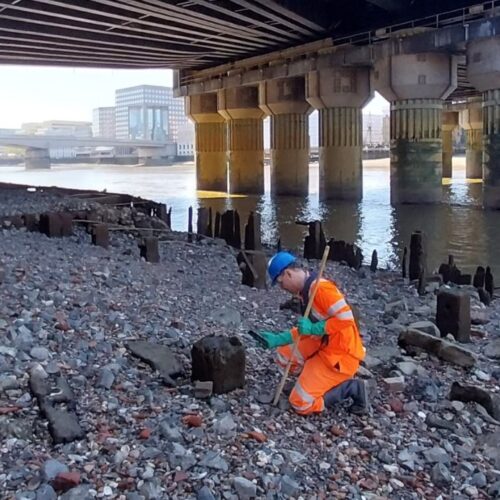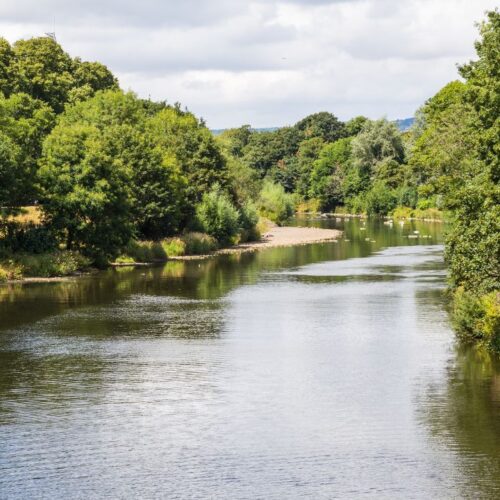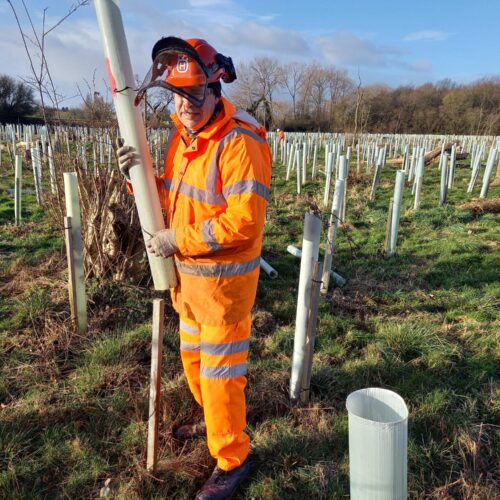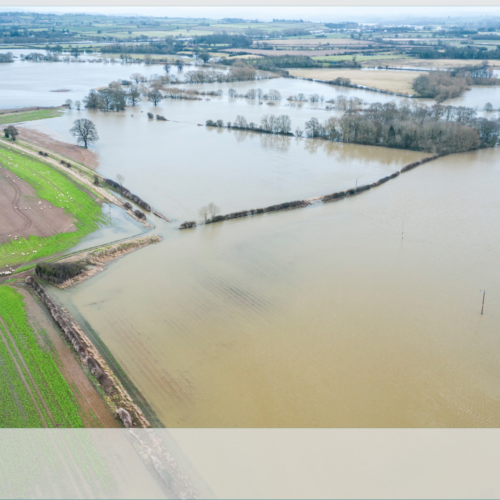Our coasts and estuaries are amongst the most productive habitats for biodiversity in the world, and their value is recognised through legal designations, including under the EU Habitats and Birds Directives. They are also international shipping routes and perform a wider range of ecosystem functions including flood mitigation. Historically, planning decisions for new port developments have often hinged on the impacts on designated habitats and species, and the adequacy of compensation measures. The successful establishment of intertidal habitat for a number of new port developments in the UK and elsewhere in Europe, coupled with a new regulatory system and collaborative approaches by port developers and stakeholders has helped to overcome conflicts.
New port development and port operations can be contentious from an environmental perspective. Generally located on the coast for obvious reasons, they require considerable land area, both on shore and in the marine environment. Our coastal and estuarine habitats, including saltmarsh, intertidal mudflat and coastal grasslands are amongst the most productive biomes in the world, supporting enormous populations of invertebrates and fish; important in their own right, and as food for other wildlife such as birds and mammals. As well as acting as international routes for shipping, the wider ecosystem functions they perform such as mitigating flood water, cycling nutrients and providing nursery grounds for commercially important fish and shellfish are important to human society1. In recognition of their biodiversity value, these coastal and estuarine habitats are protected through national and international legislation, the requirements of which have often presented a challenge to port developments. This article reviews the measures that have been taken to mitigate and compensate for potential losses to biodiversity by new port developments.
The importance of site impact on planning decisions
In 2002, ABP’s proposal for a new port development at Dibden Bay in Southampton Water, Hampshire, was refused after a 13-month public inquiry on the grounds of impacts on sites protected under the EU Habitats and EU Birds Directive. The case hinged on the loss of grazing marsh and intertidal mudflat habitats within the Solent Maritime Special Area of Conservation (SAC) and Solent and Southampton Water Special Protection Area (SPA). This brought potential conflicts between port planning and nature conservation issues to centre stage. SACs and SPAs are protected under the EU Habitats Directive and EU Birds Directive respectively and contribute to a network of sites across Europe known as Natura 2000. Although new intertidal habitats were proposed, the Inspector considered that these were inadequate compensation for those lost due to the port development2.
Mitigation through intertidal habitat creation
At around the same time, plans were being developed for a new container port development on the Thames Estuary at Shellhaven, site of the former Shell oil refinery. Again, the planning process identified that the development could impact on an SPA (the Thames Estuary and Marshes SPA). To compensate for losses from these protected sites two new areas of land were acquired by the port specifically for intertidal habitat creation, one on either side of the Thames estuary. At both sites, flood defences were re-located inland allowing the land to be inundated by the tide. Stanford Wharf Nature reserve in Essex was created in 2010 and is now managed in partnership with the RSPB. Salt Fleet Flats in Kent was created in 2016. Wintering birds are now using both areas extensively.
Amphibian and Reptile Translocation
In addition to deep water berths, DP World London Gateway Port, as it became, would also include DP World London Gateway Logistics Park (LGLP) one of Europe’s largest ever logistics parks. Occupying approximately 400ha the logistics park would be constructed on formerly developed oil refinery land. The grassland and small ponds that had established on the site were found to support significant populations of amphibians and reptiles, including great crested newts. Great crested newts are protected under the EU Habitats Directive and developments which may affect them must demonstrate that the ‘conservation status’ of the population will not be adversely affected. In the case of LGLP, the very large numbers of amphibians and reptiles recorded during initial surveys meant that this test could not be met simply by accommodating them on the existing site.
The result was, at the time, the largest species translocation ever undertaken in the UK. Moving wildlife to an alternative site, a process known as translocation, is potentially controversial. The new, or receptor site, generally needs to have similar physical characteristics to the site from which the animals or plants have been moved. It also needs to be demonstrated that the receptor has sufficient space and doesn’t already support a population that might be disrupted by the newcomers – a principal termed carrying capacity. The mitigation strategy for London Gateway Port, developed by Thomson in collaboration with DP World, involved creating 34 new ponds and other supporting habitat. Although the areas of habitat created within London Gateway’s ownership were considerable, additional carrying capacity was required for reptiles captured on the site, and some animals were translocated to an offsite location in Wiltshire. Between 2007 and 2012 hundreds of great crested newts and thousands of reptiles were translocated to new habitats.
Habitat creation, restoration and management
At the Port of Immingham and Hull3, 57 hectares of mudflat and salt marsh, and six hectares of grassland were created by ABP on the Humber as compensation for the development of two river berths. As for LGP, the driver behind the compensation had been impacts on Natura 2000 sites. 66 hectares of new habitat were created across the two sites, including intertidal mudflat, saltmarsh and grassland at a total cost of £3.5 million. The scheme differed from LGP because agreement for the scheme was reached with stakeholders without the need for a public inquiry. ABP entered into a legally binding agreement to deliver the mitigation measures – the first of its kind in the UK. A comprehensive mitigation and monitoring package was also agreed4.
On the south bank of Humber at North Killingholme, the Able Marine Energy Park (AMEP) covers an area of c 900 acres. It is a bespoke port facility for the Renewable Energy Sector, particularly Offshore Wind and will feature c 1,300m of new deep-water quays. Once again, ecological compensation was required to offset impacts on an SPA. The new habitat covers an area of 90 hectares (222 acres) and provides a specially engineered wet grassland habitat for the benefit of a range of bird species including Curlew, Golden Plover, Lapwing and Ruff5.
In another example at Falmouth Harbour, protected maerl habitat was restored in order to offset the potential loss of seabed habitat due to deepening and straightening of the shipping channel into the Harbour. Low value non-maerl sediment was dredged from a 6-hectare area elsewhere in the harbour by the Harbour Commissioners and replaced with maerl sediment6.
Elsewhere in Europe, habitat compensation for the loss of intertidal and subtidal habitat due to dredging have been undertaken on the Scheldt estuary on the border between Belgium and Holland. The Flemish Government’s Sigmaplan7; a management plan to restore the Scheldt estuary and compensate for intertidal and subtidal habitat lost due to dredging, includes measures such as flooding polders.
Changes to planning legislation
In recent years, the approach to port development has been shaped by emerging domestic legislation, EU policy and an increasing focus on good environmental governance at a corporate level. The Planning Act (2008) brought in a new consenting process for major infrastructure projects which aims to streamline stakeholder consultation and reduce uncertainty. Under the Act, National Policy Statements (NPS) have been prepared for each major industry sector, including energy, transport, water, waste water and waste. The NPS sets out the government’s objective for development of nationally significant infrastructure within that sector, and specific locations where these have been identified. The purpose of the NPS is to allow adequate consultation on the principles for development in each sector, prior to consideration of individual planning applications. Furthermore, a strategic marine planning system has been created under the Marine and Coastal Access Act (2009) delivered through Marine Plans. Through the Marine Management Organisation (MMO) the Act ‘provides the legal mechanism to help ensure clean, healthy, safe, productive and biologically diverse oceans and seas’.
The examples presented here chart a transition from direct confrontation between the ports industry and nature conservation stakeholders to a more collaborative approach to the development of mitigation schemes. In all cases, the driver for mitigation has been underpinned by the requirements of the EU Habitats and Birds Directives.
As we move into politically uncharted waters, stronger integration of biodiversity and Natura 2000 requirements into port activities and planning will be essential.
References
- http://www.tide-project.eu/downloads/ES_PDF_KW.pdf
- https://archive.uea.ac.uk/~e130/Saltmarsh.htm
- http://www.sudg.org.uk/habitat-creation/
- http://discomap.eea.europa.eu/map/Data/Milieu/OURCOAST_050_UK/OURCOAST_050_UK_Case_HabitatCreationHumberEstuary.pdf
- https://www.ableuk.com/able-humber-port-completes-first-phase-of-habitat-mitigation/
- https://www.falmouthharbour.co.uk/wp/wp-content/uploads/Appendix-D-Plymouth-Uni-Maerl-Trial-Final-Report.pdf
- http://www.flanderstoday.eu/innovation/flemish-governments-sigma-plan-restore-natural-scheldt-habitat












